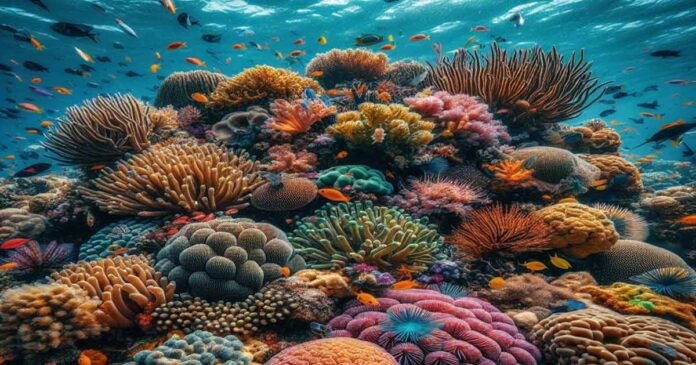Have you ever wondered what secrets lie within the depths of our oceans? Well, scientists have just uncovered a remarkable discovery that sheds light on the history of pollution and its impact on our environment.
1. A Breakthrough in Coral Research
Unlocking the Past with Coral Archives
Coral reefs, those vibrant underwater ecosystems, are not just havens for marine life but also hold valuable clues about our planet’s past.
These majestic creatures, akin to nature’s time capsules, have been quietly recording the story of our world for centuries.
The First-of-Its-Kind Revelation
In a groundbreaking study led by researchers at UCL, pollutants from burning fossil fuels have been unearthed within coral skeletons for the very first time.
This discovery marks a pivotal moment in scientific research, offering a new lens through which to examine the history of pollution.
2. Tracing Pollution Through Time
A Closer Look at Coral Growth
Much like the rings of a tree, corals exhibit distinct growth patterns that provide a window into the past.
By analyzing these growth layers, scientists can unravel the environmental conditions that prevailed during different periods of time.
Unveiling the Pollutant Particles
The study, published in the journal Science of the Total Environment, focused on carbon particles emitted by burning fossil fuels, known as fly-ash or spheroidal carbonaceous particles (SCPs).
These pollutants, previously unseen in coral deposits, serve as tangible evidence of human influence on the environment.
3. The Journey of Discovery
Exploring Illa Grossa Bay
The research team ventured to Illa Grossa Bay, located off the Columbretes Islands in the Mediterranean Sea, to collect coral samples.
This pristine marine environment provided the ideal setting for their investigation, free from local contamination.
Insights from Castelló, Spain
Coral samples were collected from several sites along a reef off the coast of Castelló, Spain, a region monitored for two decades as a global change sentinel site.
These corals, belonging to the species Cladocora caespitosa, offered a wealth of data for analysis.
4. Decoding the Data
Dissolving Coral Skeletons
Back in the laboratory, the researchers dissolved the coral samples in acid, leaving behind any pollutant particulates embedded in the skeleton.
This meticulous process enabled them to isolate and analyze the SCPs with precision.
Uncovering Historical Trends
Through microscopic and electron microscope analysis, coupled with X-ray examination, the team identified a significant increase in SCP contamination within the coral skeletons between 1969 and 1992.
This period coincided with rapid industrialization and coal consumption in Europe.
5. Implications for the Anthropocene Epoch
Marking the Dawn of a New Era
The presence of SCPs within coral skeletons aligns with the proposed onset of the Anthropocene epoch, a geological age defined by human impact on the planet.
These pollutant particles serve as enduring markers of our environmental footprint.
A Call to Action
As our understanding of the Anthropocene deepens, so too does our responsibility to safeguard our planet for future generations.
This research underscores the urgent need for sustainable practices and proactive environmental stewardship.
Conclusion
In the depths of our oceans, a hidden history awaits discovery. Through the remarkable resilience of corals, we glimpse the profound impact of human activity on our environment.
As we navigate the challenges of the Anthropocene, let us heed the lessons of the past and chart a course towards a more sustainable future.
FAQs
Corals serve as natural archives, recording environmental data over long periods of time. Their growth patterns offer insights into past climatic conditions and human activities.
Pollutants, such as SCPs from burning fossil fuels, are ingested by corals from the surrounding water and incorporated into their calcium carbonate skeletons as they grow.
The discovery of pollutants in coral skeletons highlights the need for proactive measures to mitigate human impact on the environment. It also underscores the importance of interdisciplinary research in understanding complex environmental phenomena.
More information: L.R. Roberts et al, First recorded presence of anthropogenic fly-ash particles in coral skeletons, Science of The Total Environment (2024). DOI: 10.1016/j.scitotenv.2024.170665

